“Get closer than ever to your customers. So close that you tell them what they need well before they realize it themselves.” – Steve Jobs
Today, we can all agree on the importance of customer service in any business. It has become equally important to keep them engage in the world full of eye-catching signs and loud advertisements.
Hence, to make sure that you are fully satisfying your customers it has become crucial for businesses to utilize all the resources at their disposal.
In the past few decades, customers have shifted online. So, marketers are continuing to focus their efforts on digital channels rather than traditional ones.
As terms such as digital marketing, email marketing, and social media marketing are thrown around marketers are left a bit confused as to which is the best channel to reach their audience and generate ROI.
Omnichannel marketing is a single solution for all their problems. In simple words, omnichannel marketing means that you are utilizing multiple channels to create a single user experience to deliver a consistent and compelling brand message.
Let’s take the example of Amazon, the e-commerce giant began as an online-only venture and has now turned into one of the greatest examples of omnichannel customer engagement.
Amazon has touched every aspect of a customer’s journey by introducing Amazon Prime. While Amazon Prime is perceived as membership discount stores but by invest in its membership promise you other free services and faster shipping.
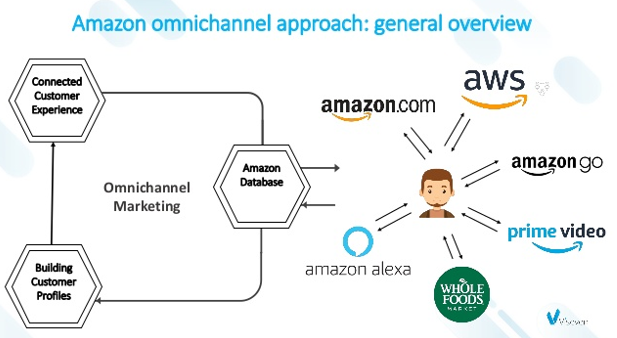
The company has taken several steps further to integrate other areas to provides a seamless experience that involves sharing wish lists online, watching TV, streaming music, playing video games through the Amazon Fire Stick, ordering groceries, and even being fashion-fitted with the new Prime Wardrobe service.
According to this study, the advantages of omnichannel marketing automation include:
- The engagement rate on omnichannel is 18.96 percent than 5.4 percent on single-channel
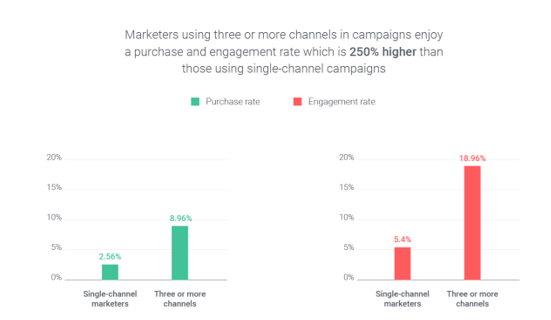
- Purchase frequency on omnichannel is 250 percent higher than single-channel
- The average order value is 13 percent more per order on omnichannel than single-channel

- Customer retention rates are 90 percent higher for omnichannel than single-channel
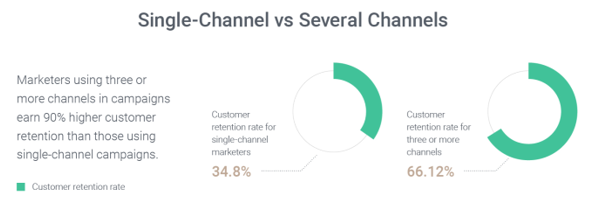
Now that we understand the importance of omnichannel marketing, it becomes equally important to understand why most of the brands fail to take advantage of this amazing marketing technique. In this blog, we are going to burst myths about omnichannel marketing:
#Myth 1: Omnichannel and Multi-Channel Customer Engagement are Same
This is one of the most common myths among marketers, especially those who still prefer traditional marketing. Yes, both methods do have a lot of similarities between them but there are important differences, too.
The argument that they two are the same is to completely misconstrue the potential and flexibly omnichannel platforms offer to a business.
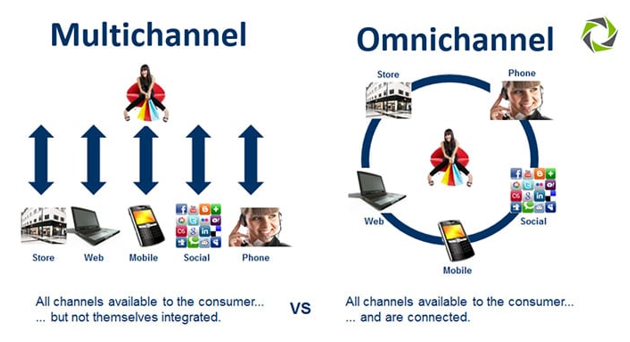
In simple terms, multi-channel customer engagement allows businesses to engage and communicate with their customers across various channels. But, on the other hand, omnichannel customer engagement takes a multi-channel approach and builds a far more holistic customer experience across channels.
Hence, a multi-channel approach might include channels including email or social media that are important for customer engagement, it does not provide the benefits of an omnichannel approach.
Omnichannel customer engagement allows users to effortlessly switch between channels while ensuring that the information in every channel is integrated. It also ensures that each customer gets personalized services during their customer journey.
#Myth 2: Omnichannel Customer Engagement is Complex
Another common misconception about the omnichannel customer engagement system is that it is incredibly complex. However, businesses can opt to make the whole process of transition in phases which can limit disruption and simplifying the process.
The transition from a multi-channel to omnichannel might give rise to difficulties but simplifies step-by-step implementation allows a less complex and hassle-free process. A well-implemented omnichannel process can also help businesses to grow and adapt to new development.
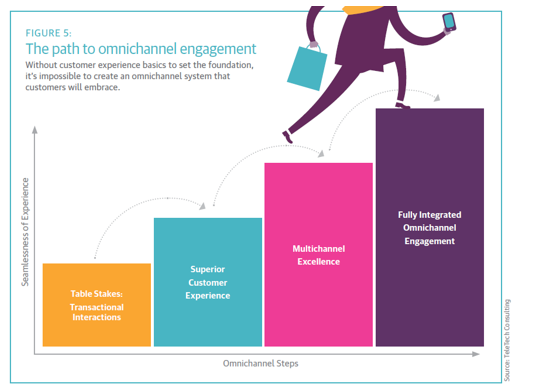
In a multi-channel approach, individual channels utilize different software which can causes problems during the time of updating. In a dedicated omnichannel platform it becomes far easy to integrating newer software as its design allows future growth.
Simply put, omnichannel systems simplify the adoption and integration of new technologies in the future.
#Myth 3: Omnichannel Customer Engagement Solutions is Expensive
Many businesses think that implementing omnichannel services is expensive. While this is not exactly false as transitioning from a multichannel to an omnichannel approach can be a little expensive. However, it is always important to consider the ROI of such an investment.
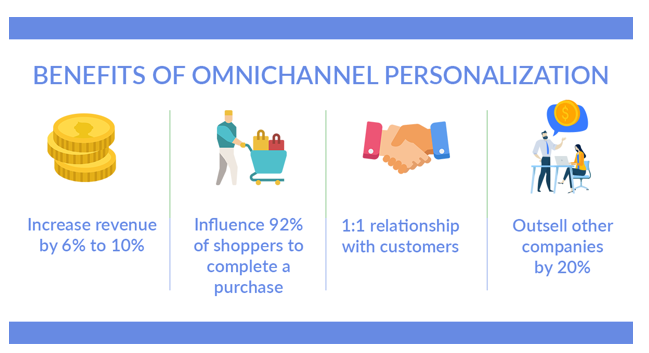
There are also additional benefits that can’t be monetized. For instance, savings made by employee efficiency increases customer satisfaction which is difficult to measure directly.
#Myth 4: Omnichannel Customer Engagement Doesn’t Work in Reality
Many marketers still believe that implementation looks good only in theories and doesn’t have a real-life backing. However, what they do not realize is that these solutions are capable of streamlining communications to improve customer engagement.
Consequently, businesses that have failed to integrate their services with omnichannel solutions are falling behind. The absence of omnichannel solutions puts businesses at a disadvantage in an increasingly competitive marketplace.
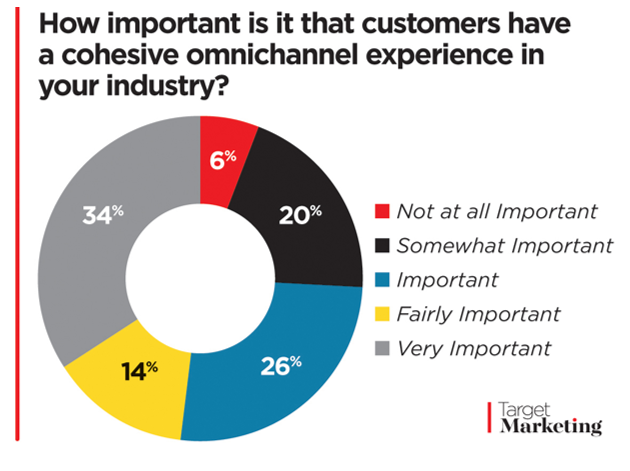
Research from Target Marketing, 74 percent of marketers said that it was fairly important to have a cohesive omnichannel experience. Only 6 percent said it wasn’t important, and 34 percent said it was very important.
#Myth 5: CRM Can Handle Omnichannel Customer Engagement
Customer Relationship Management (CRM) tools are very powerful. Businesses can use them to better understand their customers. However, they are not truly capable of providing omnichannel customer engagement.
In short, CRM helps improve multi-channel engagement but it fails to deliver a seamless experience across all channels.
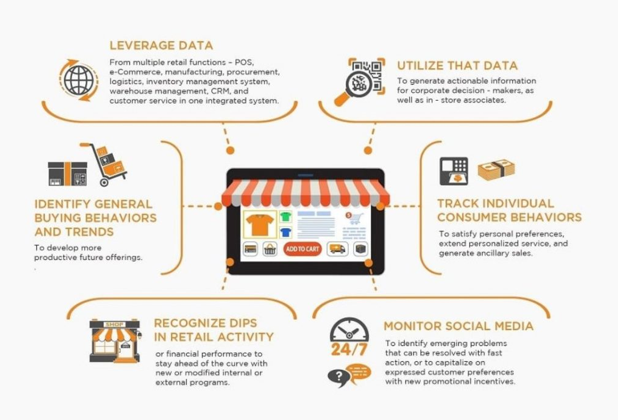
The efficiency of CRM will be an important part of an omnichannel strategy; it is not able to provide omnichannel solutions on its own.
Nevertheless, creating a business process that is supported by omnichannel CRM can become a key for them to target, acquire, retain, understand, and collaborate with customers.
This can help businesses create a great foundation for their brand’s customer experience strategy. Additionally, omnichannel CRM can enable new brand strategies and integration with the latest technologies.
#Myth 6: Contact Center for Multi-channel and Omnichannel is the Same
This is a very common myth due to a lack of clarity between multi-channel engagement and omnichannel engagement. But businesses need to understand that there are substantial differences. These differences can you exceed your customers’ fundamental growing expectations.


Similar to what we discussed earlier; multi-channel gives you the ability to engage with customers across more than one channel. But that doesn’t mean that the services offered across all those channels will be either integrated or consistent.
It doesn’t even guarantee that your customers will experience a seamlessly shift between channels.
Omnichannel bridges the gap between different channels for holistic customer experience. The omnichannel customer experience platform can help you design, manage, and optimize their journey to deliver personalized experiences.
#Myth 7: Omnichannel Platforms Only Improve Contact Centre
It is easy for businesses to think that omnichannel platform engagement doesn’t have a positive impact on any other part due to its nature it is very untrue. Defining omnichannel engagement as beginning with the first point of contact and ending with the last isn’t an accurate description.

Omnichannel can have a far-reaching effect on every part of the business. This approach can help collect important information at each action point from customer engagement. This information on customers can be accessed and used in different ways.
For instance, information on how a customer navigates the different channels will impact how the marketing team targets them. Hence, the advantages of omnichannel help streamline the whole user journey.
Bottom line: Omnichannel customer engagement myths busted
Omnichannel customer engagement aims to help businesses get a step closer to businesses by providing employees with the right tools. These tools can enable them to receive an integrated user interface that provides their employees with more efficient and easy-to-use means of handling various channels.
In this blog, we have attempted to debunk the seven most common myths on omnichannel customer engagement. Even though many of these preconceived notions fail to provide any real basis but many businesses still fear implanting this new customer engagement.
In the competitive world, it is also important for businesses to keep in mind that the adoption of new technology and strategies is essential to survive. Despite being a bit more expensive than other digital tools they are worth it!
These tools can allow businesses to interact with their customers as they want and when they want. It allows businesses to reach out to the channel in such a way that it’s convenient for both. If a business wants to provide customers with the experience that they desire and demand adopting an omnichannel approach can help them enormously.
Writing is food to my soul and the quote that inspires me to keep learning is “Learning never exhausts the mind” by Leonardo da Vinci. Tech Research Online has given me a platform to do just that, I learn and I write, and then I learn a little more.

